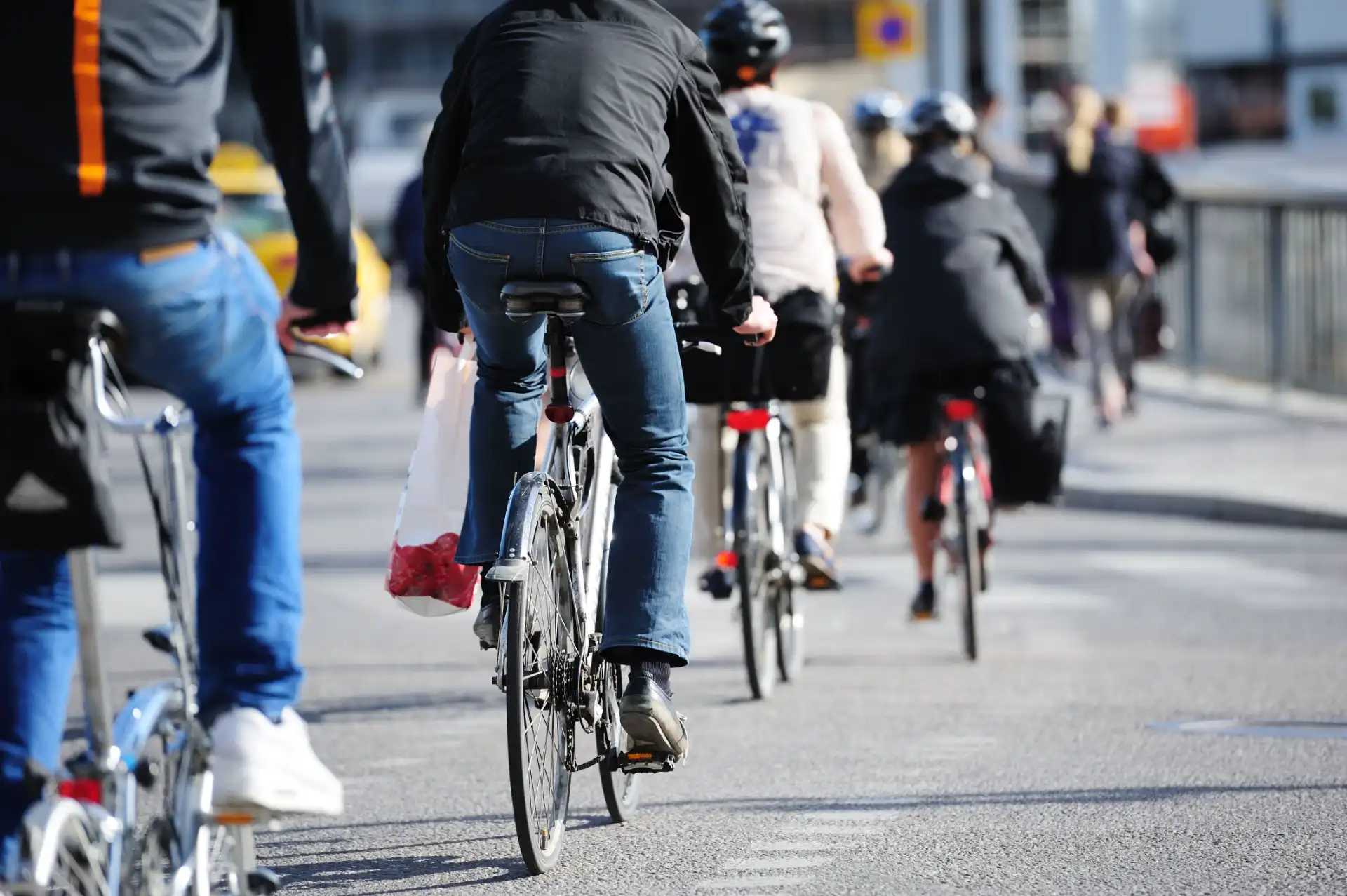As cities around the world become more congested and environmental concerns grow, urban transportation is undergoing a transformation. Among the various alternative transportation options, biking is emerging as one of the most practical, efficient, and eco-friendly choices for commuting. Here’s why commuting by bike is not only a viable option but the future of urban mobility.
1. Environmental Impact: Reducing Carbon Footprint
One of the most significant advantages of commuting by bike is its positive effect on the environment. With increasing concerns about climate change and air pollution, switching to biking for daily commuting can make a substantial difference. Unlike cars and buses, bikes produce zero emissions. By choosing to bike instead of drive, you’re helping reduce the number of vehicles on the road, which in turn lowers air pollution, carbon emissions, and traffic congestion.
In fact, studies show that replacing short car trips with bike commutes can reduce individual carbon footprints significantly. It’s a small change that can have a big impact on the planet, especially when more people adopt cycling as a primary mode of transport.
2. Cost-Effectiveness: Save Money on Transportation
Owning and maintaining a car is costly. From purchasing the vehicle to fuel, insurance, and parking fees, the expenses quickly add up. On the other hand, biking is incredibly cost-effective. Once you’ve invested in a good-quality bike, your daily expenses are limited to occasional maintenance, tires, and a helmet.
Additionally, many cities are implementing bike-sharing programs, which eliminate the need for a personal bike altogether, making cycling even more accessible and affordable. By switching to biking, commuters can save money that would otherwise be spent on gas, parking, and other car-related expenses.
3. Avoid Traffic: Beat the Rush Hour Blues
Traffic jams are a major frustration for city dwellers. Sitting in bumper-to-bumper traffic can waste hours of your day, adding unnecessary stress and frustration to your commute. By commuting by bike, you can avoid traffic altogether. Bikes have the advantage of being able to weave through traffic, use bike lanes, and even take shortcuts that cars can’t access.
In some cities, cycling lanes are being expanded and integrated into road networks to make biking even more efficient and safe. Bikers can bypass gridlock, significantly reducing commute times and improving overall productivity.
4. Health Benefits: Improve Fitness and Well-Being
Cycling is not just an eco-friendly and cost-effective mode of transportation—it’s also a great way to improve your health. Commuting by bike offers numerous physical benefits, including better cardiovascular health, improved muscle strength, and increased endurance. Regular cycling helps lower the risk of chronic conditions like heart disease, diabetes, and obesity.
In addition to physical health benefits, biking also has mental health advantages. Cycling releases endorphins, which can reduce stress, anxiety, and depression. The added bonus of being outdoors and active in the fresh air contributes to overall well-being and mood improvement.
5. Infrastructure Growth: Cities Are Adapting to Cyclists
As more people opt for bikes as a mode of transportation, cities are beginning to invest in better infrastructure for cyclists. Many urban areas are building more bike lanes, adding bike racks at key locations, and implementing bike-sharing programs to make cycling more accessible.
Governments are also recognizing the importance of promoting sustainable transportation. In several cities, biking has been prioritized as part of green initiatives aimed at reducing traffic congestion and encouraging healthier lifestyles.
With these improvements in infrastructure, cycling is becoming an increasingly safe and convenient option for urban commuters. Plus, bike lanes help prevent accidents and make cycling more attractive to new riders.
6. Faster Commutes in Dense Urban Areas
In densely populated cities where traffic congestion is a daily challenge, bikes can often offer the fastest way to get from point A to point B. While cars may be stuck in traffic or waiting for parking spaces, cyclists can continue to move efficiently, especially when using dedicated bike lanes or paths.
Cycling allows you to bypass traffic, find shortcuts, and avoid the frustrations of searching for parking. In cities with heavy congestion, biking can often be a faster and more reliable option for daily commuters.
7. Sustainability: Long-Term Benefits for Cities
As cities become more congested and the demand for transportation increases, the future of urban mobility will likely depend on sustainable solutions. Biking is a key part of this future. It’s a mode of transportation that reduces dependence on fossil fuels, alleviates traffic, and minimizes environmental impact.
In the long term, as more people embrace cycling for commuting, we can expect to see improved air quality, healthier cities, and more sustainable urban development.
8. Community Engagement and Social Benefits
Cycling also fosters a sense of community. More people biking to work means more cyclists on the roads, leading to a culture of shared responsibility for road safety. Bike-sharing programs and cycling events can help bring people together, promoting a sense of unity and encouraging a healthier, more active lifestyle.
Additionally, cycling often leads to greater social interaction and engagement. Whether it’s chatting with fellow commuters or joining a cycling group, biking creates opportunities for connection that are often absent in other forms of transportation.
Conclusion: The Future Is on Two Wheels
Commuting by bike offers numerous advantages, from environmental sustainability and cost savings to health benefits and the reduction of traffic congestion. As cities continue to invest in bike-friendly infrastructure, and more people recognize the many benefits of cycling, biking is poised to become a major player in the future of urban transportation.
If you haven’t already, consider making the switch to commuting by bike. It’s not just about getting from point A to point B—it’s about adopting a healthier, more sustainable, and more efficient lifestyle that benefits both you and the planet.




